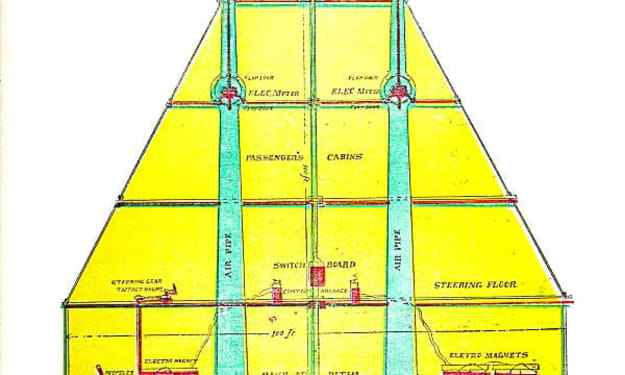
The Baghdad Battery, often referred to as the Parthian Battery, is an intriguing artifact that has sparked considerable debate among historians, archaeologists, and scientists. Discovered in modern-day Iraq, this ancient object has led to much speculation about its purpose and the technological capabilities of ancient civilizations. This story explores the discovery, theories, and controversies surrounding the Baghdad Battery.
Discovery
The Baghdad Battery was discovered in 1938 by German archaeologist Wilhelm König in the vicinity of Khujut Rabu, a village near Baghdad. The find consisted of a collection of artifacts dating back to the Parthian or Sassanian periods, around 150 BCE to 650 CE. Among these items was a peculiar ceramic jar, roughly 5 inches tall, containing a copper cylinder and an iron rod.
The jar was sealed with bitumen, and the copper cylinder, itself sealed with bitumen, was positioned inside the jar. The iron rod was suspended in the center of the copper cylinder. When König examined these components, he hypothesized that they could function as a galvanic cell, or battery, capable of generating an electric current when filled with an acidic or alkaline electrolyte.
The Battery Hypothesis
König’s hypothesis was revolutionary. He suggested that if the jar were filled with a liquid such as vinegar or lemon juice, it could produce an electric current, thereby functioning as a primitive battery. This idea was met with skepticism and fascination in equal measure.
Supporters of the battery hypothesis pointed to the basic principles of electrochemistry. The iron and copper, in the presence of an acidic solution, could indeed produce a small voltage. Replications of the device by modern scientists have confirmed that it can generate a voltage of about 1.1 volts. This led to further speculation about the possible uses of such a device in ancient times.
Theories of Use
Several theories have emerged regarding the potential uses of the Baghdad Battery. One popular idea is that it was used for electroplating, a process that involves coating a metal object with a thin layer of another metal using electrical current. There is some historical evidence suggesting that ancient civilizations practiced forms of electroplating, and the battery could have been employed in this process to gild or silver-coat objects.
Another theory posits that the battery might have been used for medicinal purposes, such as electrotherapy. Ancient cultures, including the Greeks and Romans, were known to use electric fish to treat ailments, and it is conceivable that a similar approach could have been used with a battery-like device.
A third, more speculative theory is that the battery had a religious or ceremonial purpose. It might have been used to create a sense of wonder or to demonstrate the power of the gods, with the small electric shock serving as a form of divine manifestation.
Skepticism and Controversy
Despite the compelling nature of these theories, there is considerable skepticism regarding the battery hypothesis. Critics argue that there is no definitive evidence that the Baghdad Battery was used as a galvanic cell. They point out that similar jars without the internal components have been found, suggesting that the objects might have had a different purpose entirely, such as storage for scrolls or other small items.
Furthermore, there is no historical documentation or contextual evidence from the period that explicitly describes the use of such devices for generating electricity. This absence of corroborative evidence leaves the battery hypothesis in the realm of speculation.
Modern Experiments and Cultural Impact
In the years following König’s discovery, numerous experiments have been conducted to test the functionality of the Baghdad Battery. These experiments have generally confirmed that the device can produce electricity, albeit at a very low voltage. However, the exact purpose and use in antiquity remain elusive.
The Baghdad Battery has captured the imagination of the public and inspired various works of fiction and popular media. It often appears in discussions about ancient technologies and the possibility that ancient civilizations possessed advanced scientific knowledge.
Conclusion
The story of the Baghdad Battery is a fascinating journey into the mysteries of ancient technology and the limits of archaeological interpretation. While the exact purpose of the device remains uncertain, its ability to generate electricity raises intriguing questions about the technological capabilities of ancient cultures. Whether used for electroplating, medicinal treatments, or as a ceremonial object, the Baghdad Battery stands as a testament to the ingenuity and creativity of our ancestors, continuing to inspire curiosity and debate in the modern world.
About the Creator
Marveline Merab
“History never repeats itself. Man always does.”
― Voltaire
Enjoyed the story? Support the Creator.
Subscribe for free to receive all their stories in your feed. You could also pledge your support or give them a one-off tip, letting them know you appreciate their work.






Comments
There are no comments for this story
Be the first to respond and start the conversation.